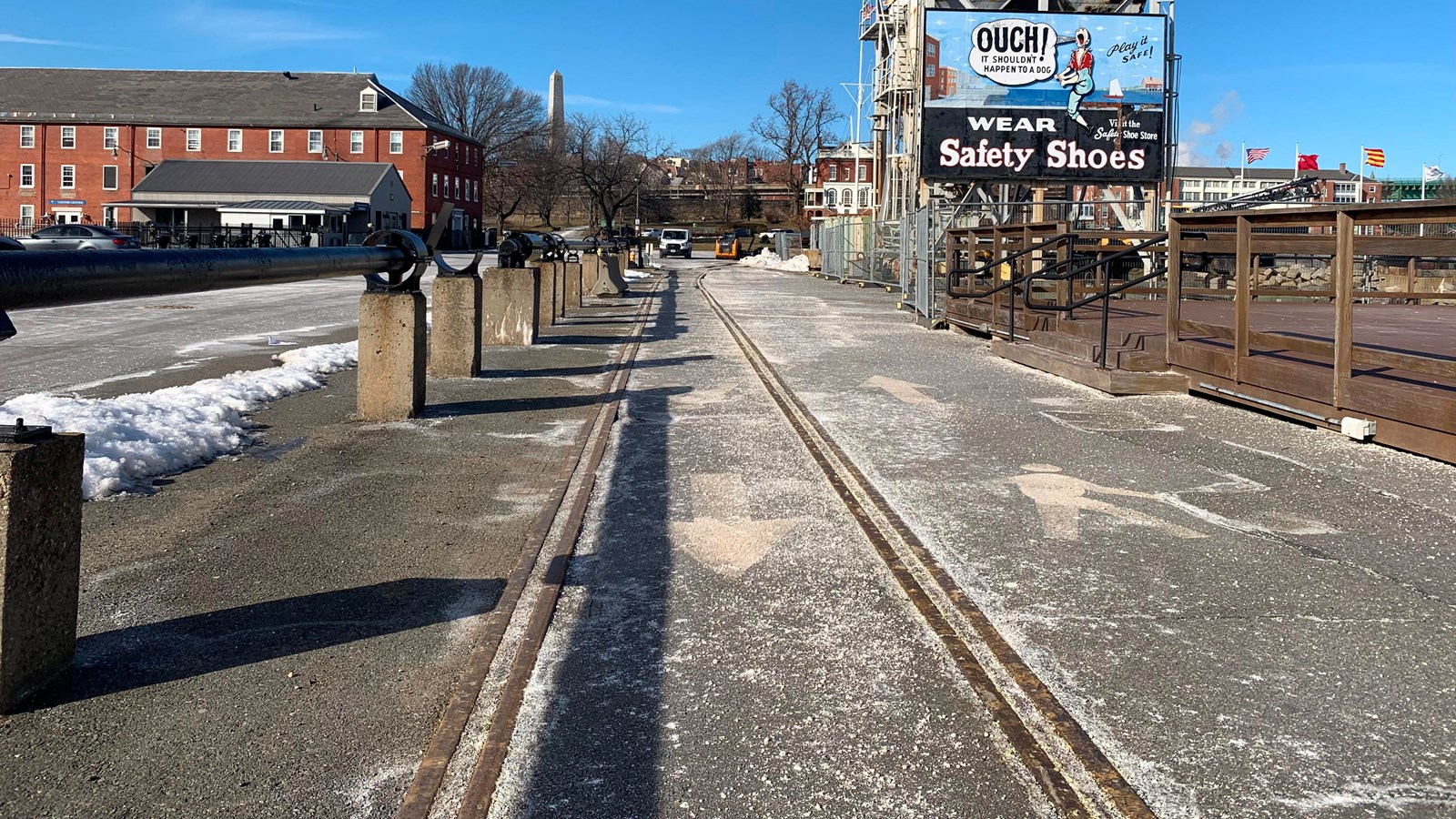Last updated: January 18, 2022
Place
Railroad Tracks

NPS Photo/Hornbeck
Railroad tracks still crisscross the ground in certain areas of the Navy Yard. While many sections are gone—either torn up or paved over—the surviving pieces provide a reminder for the extensive rail network at the Yard. This network transported materials from building to building and out to the dry docks and piers.
For decades the Charlestown Navy Yard had no railroad, particularly because railroads did not really exist when the US Navy established the Yard in 1800. There were roads made of rails, but these simple wooden or wrought iron “wagonways” and “plateways” found use primarily in mines or quarries. Trains of railcars were either pulled by animals or allowed to roll by gravity.
The Navy first laid tracks down at the Charlestown Navy Yard in the 1860s, relying on animal-drawn railcars. By using these trains, workers could move bulk materials, such as coal, around the yard.
With the advancement of locomotive and rail technology, by 1904 the Navy had overhauled the entire rail system of the Yard. Standard gauge railcars could now directly enter the Yard from anywhere in the country, delivering materials more quickly and reliably. Additionally, these gauge rails could also operate locomotive cranes that assisted workers in hoisting material and ship components. To meet the needs of this rail system, part of Building 105 turned into a maintenance shop for the Navy Yard’s railroad.
While the use of these railroad tracks for steam locomotives proved successful, the Navy Yard switched to diesel locomotives in the mid-1900s. These locomotives promised more power, less maintenance, and cheaper operating costs. However, soon the Navy recognized that diesel trucks could also efficiently move loads around the Charlestown Navy Yard, without requiring infrastructure like the railroads. By the end of the 1950s, the Navy had made changes to the Yard to better accommodate truck traffic, making the need for the railroads obsolete.
